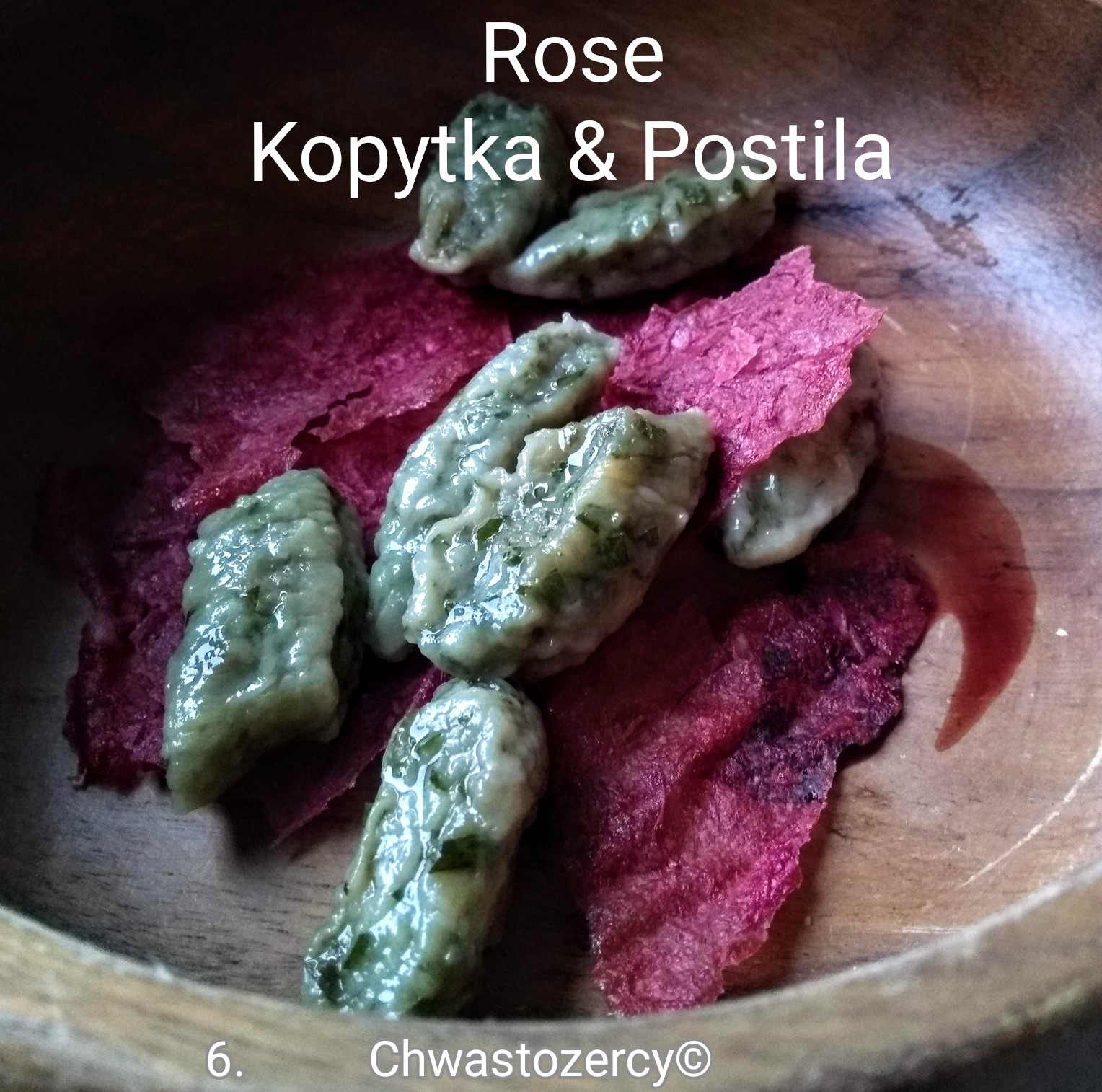
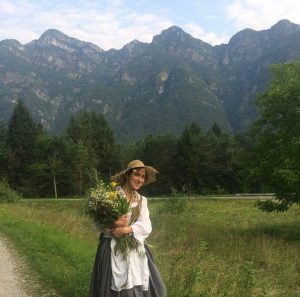
About Anna
Anna Maria Ruminska is an architect, cultural and food anthropologist, forager, wild edible plants consultant, researcher, culinary curator and re-enactor of ancient cookery. She also works as a designer in Artecubo, Poland and funded “Chwastozercy Ancient Food” initiative. On top of this she is the leader of the Slow Food Dolny Slask Convivium (www.slowfooddolnyslask.org) and an publicist of the international network of SlowFood.com
About the dish
Rose Petals Postila is a medieval dish from Central and Eastern Europe: pastyła [pastyua] постила. I love making Polish pastyła and also eating it. The kids love it too so it’s a good way to keep them away from unhealthy junk food.
Pastyła (as we call it in Poland) was invented by ancient nomads and settlers in the Caucasus area. Poland and Ukraine adopted and developed this concept. While those in the Caucasus are still considered the masters, other countries have developed their own versions: Armenia has fruit lavash, Georgia has tklapi and Turkey has pestil.
Poland also has a tradition of preserving fruits, and made pastyla. But in Europe, the oldest tradition comes from RUS’ – no, not Russia, but RUS’ (Ukrainian: Русь), the country that was once partly joined with Poland. That’s why today we share a heritage and culinary dishes with Ukraine.
This pastyła has been made from rose petals and apple in Rus’ style: it’s very thin, but it has no nuts or honey like they did in Rus’.
Nuts, honey and apple were important natural resources in Rus land. The Rus’ постила dates back to 14th century! So, this is a medieval treat.
Ukrainian postila is registered in the Slow Food Ark of Taste as a historical and traditional product endangered by modern industrial produce.
Rose pastyła is delicious. It is also an ideal homemade pre-workout snack and great for journeys. It also has a long shelf life.
I never cut off the white parts of the petals, so my pastyła is slightly bitter, which brings out the rose flavour.
Kopytka [kopytka] is a very special Polish dish, a type of kluski [klooskee] – a kind of dumplings. In Italy they make gnocchi, but in Poland we make kopytka. We usually make kopytka using flour and boiled potatoes, served with red beetroot or sauerkraut, but here I skipped potatoes.
The name “kopytka” means “little hooves” and derives from the shape. The dough rolls are cut diagonally to increase the surface, in order to catch more of gravy. Sometimes, when the potato harvest was poor, people in villages couldn’t make proper kopytka. Instead they made it using flour and breadcrumbs and sometimes ground weeds. So, by simply cutting the dough rolls diagonally, you have Polish kopytka.
I chose to make a sweet version that complements the rose petal postila.
Rose Kopytka & Postila Recipe
I like to use rose from my garden for this one but it would also work well with dog rose found growing in many hedgerows.
Processing the leaves
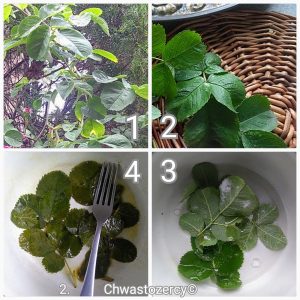
1.Pick the leaves.
2.Tear off the peduncles.
3.Soak them 30 minutes in water and oil drop.
4.Slowly cook them 10 minutes.
Processing the kopytka
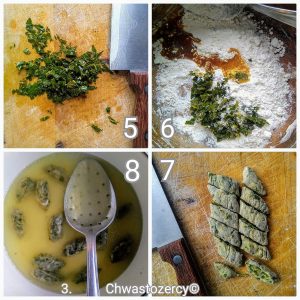
5.Chop the leaves finely.
6.Mix them with flour and diluted beet root syrup to make a hard dough.
7.Shape it into a roll and cut small pieces diagonally.
8.Boil the kopytka in a pot with hot water with some sugar for about 2-3 minutes as they flow up.
Processing the flowers
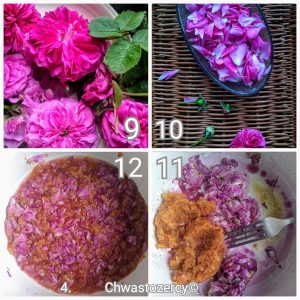
9.Cut off the flowers.
10.Tear off the petals.
11.Slowly cook them with a spoon of home made apple jam.
12.Grind the mixture with a wooden or stone pestle into smooth spread.
Processing the pastila
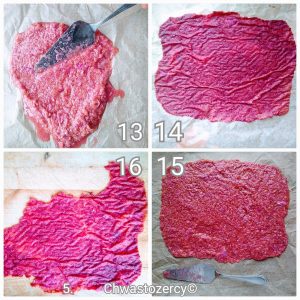
13.Spread the rose-apple jam thin (3mm) on paper or wet cloth.
14.Let it dry in air or a stove (30°C).
15.Check if postila is all dry.
16.Tear postila off the paper or cloth and crack it into chips.
